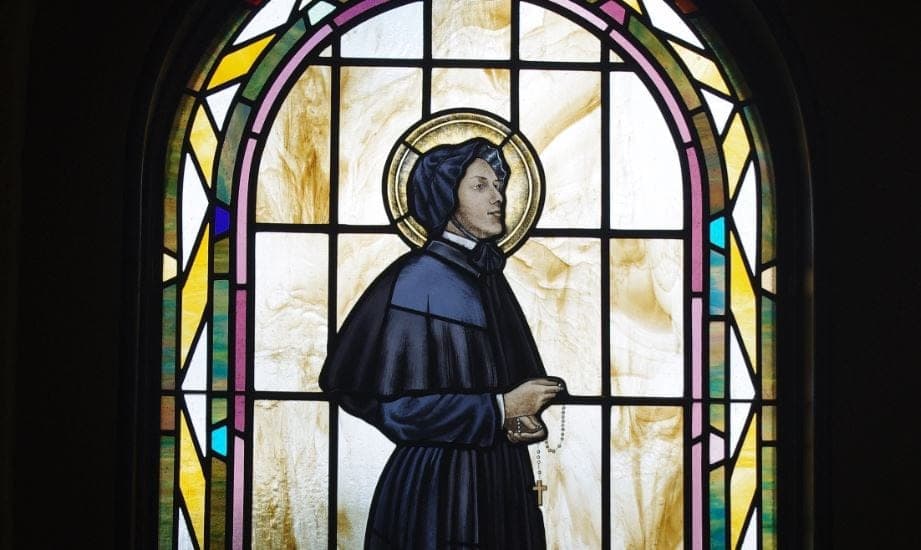This past week, we celebrated the feast day of Mother Elizabeth Ann Seton. Mother Seton is one of our few American saints. In fact, she was the first natural-born American to be canonized a saint by the Catholic Church.
The faith of this early nineteenth century woman can still help us today. Her witness can enrich our own understanding of faith and provide us with a real, in the trenches, guide to actively living our faith in everyday life.
Mother Seton, or any of our other saints, are not merely statuary figures with no relevance to us. They lived real lives, endured real sufferings, and loved with a real human heart with all its own scars and sorrows.
Somehow the holy ones went from being understood as our older brothers and sisters to being viewed as distant relatives best kept at bay. The saints, however, offer us their friendship, understanding, and help. One such invitation comes from St. Elizabeth Ann Seton.
When we think of the story of a saint and a religious sister, we normally do not think of issues relating to a husband, children, financial ruin, death and mourning, a crisis of faith, and failure.
But, Seton experienced and suffered all of these crosses.
Seton fought in the midst of difficulty to see God’s providence, and she labored to live by faith in him. This way of life was not always easy for her, but she understood that it was the right path and she sought to follow it.
Elizabeth Ann Bayley was born in 1774, two years before the Revolutionary War. She was from an educated, wealthy family in New York who were Anglicans. When she was 19, she married a successful young businessman, William Seton. He and Elizabeth Ann were deeply in love, and eventually they had four children. Sadly, this joy would not last long.
Business and financial problems began to intensify for the young family. Elizabeth Ann shared her husband’s anxieties. Sleepless nights, perpetual concerns, and worries over ends meeting were new crosses for them. William’s father died, and the Seton’s inherited the care of several family members. Money became even more stretched. In the same time period, Elizabeth Ann’s father died, and she severely mourned his loss.
Eventually, William and Elizabeth Ann had to declare bankruptcy. It was an embarrassment to them among their social circles.
William’s health did not improve, and it was suggested that a change of climate might assist him, and so Elizabeth Ann took him to Italy. They could not afford it, but she took William there because she feared for her husband’s health.
William died, however, and Elizabeth Ann entered a period of great darkness in her life. She struggled to find answers, and to believe in God’s providence. It was a moment of tremendous poverty of spirit and grave perplexity for her. She became physically sick, and almost died. In the darkness, she began to appreciate the Catholic Church. She found great consolation in its beauty and doctrine.
When she returned home, Elizabeth Ann became Catholic, and turned to prayer and the sacraments for answers. Eventually, she would witness the death of many loved ones, including two of her own children.
Through different members of the clergy, Elizabeth Ann created different Catholic schools.
When young women came to follow her, she became a professed religious sister and eventually established her own convent, while still caring for her own natural children.
Elizabeth Ann received the title “Mother Seton,” by which she is universally known to this day. Mother Seton’s efforts in Catholic education were not always welcomed or successful, but she continued to hope and would not stop fighting. Her faith compelled her to make every effort possible to improve and enhance the emerging Catholic school system in the United States.
The life of this saint was not easy. She had every reason to give up and not to believe. In the struggles of her life, however, she found reflections of God’s kingdom and made a continuous act of faith.
And so, a tranquil image on some holy card, or a statue left on a shelf, or a passing glance at some stained glass window, do no justice to Mother Seton or to any friend of God. Mother Seton lived without a misplaced idealism. She lived where she was and labored to make a better life for the people around her, especially the uneducated immigrant or the forgotten poor of society.
The life of this holy one, therefore, merits our attention and invites our emulation. Mother Seton’s witness serves as a model to us of what it means to believe, even in the midst of sorrows and struggles, and to fight so that goodness wins and peace triumphs.














